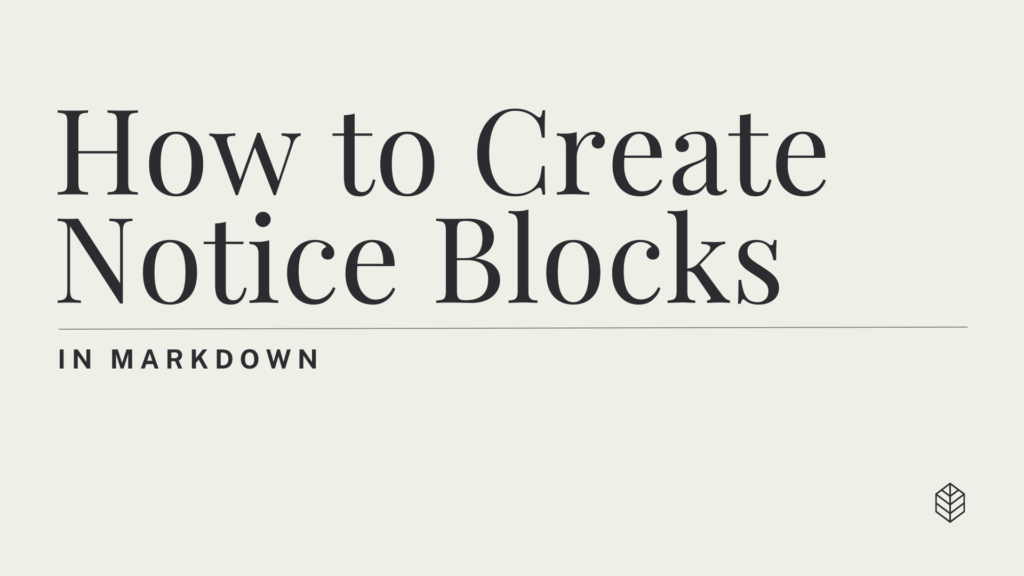Markdown is a lightweight markup language with plain-text formatting syntax. It’s designed to be easy to read and write, and it’s widely used for writing documentation, README files, and more. One of the features that can enhance the readability of your Markdown documents is the ability to create notice blocks. These blocks can highlight important information, warnings, or notes to the reader.
Understanding Notice Blocks
Notice blocks are visual elements that draw attention to specific parts of your text. They can be used to emphasize warnings, tips, or other critical information that you want to ensure the reader notices. In Markdown, there are several ways to create notice blocks, depending on the platform you’re using.
Creating Notice Blocks in GitHub Flavored Markdown (GFM)
GitHub Flavored Markdown (GFM) is an extension of standard Markdown that includes additional features. One of these features is the ability to create notice blocks using alert syntax. Here’s how you can create different types of notice blocks in GFM:
Note
To create a note block, you can use the following syntax:
> [!NOTE] This is an important note.
This will render as a blockquote with a note icon.
Warning
For a warning block, use:
> [!WARNING] This is a warning message.
This will render as a blockquote with a warning icon.
Important
To highlight crucial information, use:
> [!IMPORTANT] This information is crucial.
This will render as a blockquote with an important icon.
Tip
Optional information that can help users be more successful:
> [!TIP] Here's a helpful tip.
This will render as a blockquote with a tip icon.
Caution
To indicate potential negative consequences:
> [!CAUTION] Be cautious of this action.
This will render as a blockquote with a caution icon.
Creating Notice Blocks in Other Markdown Environments
If you’re not using GFM or need more customization options, you can use HTML within your Markdown to create notice blocks. Here’s an example using HTML:
<div class="notice">
<p>This is an important message.</p>
</div>
You can style this HTML element with CSS to match your desired look and feel.
Best Practices for Using Notice Blocks
- Use Sparingly: Overusing notice blocks can make your document cluttered and reduce their effectiveness.
- Be Consistent: Use the same type of notice block for similar messages throughout your document.
- Provide Context: Ensure that the notice block is relevant and provides useful information to the reader.
Conclusion
Notice blocks are a great way to draw attention to important information in your Markdown documents. Whether you’re using GFM or another Markdown environment, there are several methods available to create these visual cues. By following best practices and using them judiciously, you can enhance the readability and user experience of your documents.
In this blog post, we explored how to create notice blocks in Markdown, focusing on GitHub Flavored Markdown (GFM) and other methods for different environments. We discussed the syntax for various types of notice blocks and provided best practices for their use. By incorporating notice blocks into your Markdown documents, you can effectively highlight key points and guide your readers’ attention where it matters most.

